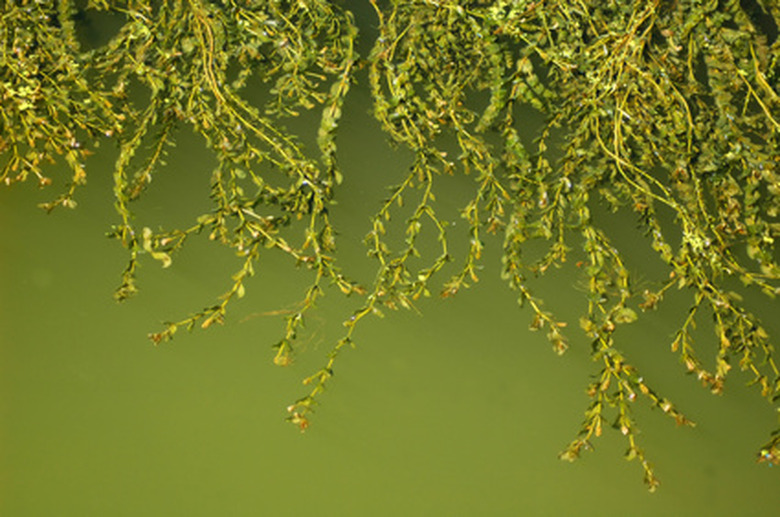Plants With Air Sacs
Aquatic plants have adapted several features that set them apart from other plants, allowing them to survive in wet conditions. In addition to flat leaves and hollow roots, many such plants have developed air sacs, which enable them to float in water. Air sacs may be present in fully submerged marine plants, such as kelp, as well as floating, flowering freshwater plants. Some examples of plants with air sacs are the water primrose, giant bladder kelp and the common bladderwort.
Water Primrose (Ludwigia Adscendens)
Water Primrose (Ludwigia Adscendens)
The water primrose, also called the water dragon, the water banana and the kessara, is a flowering, perennial herb found in the Himalayas, India, China, Malaysia and Australia. Its floating, oblong leaves are about 7 cm long, and its petals are creamy white and yellow towards the base. Found in freshwater habitats, the plant's floating stem and leaves allow it to thrive in both deep and shallow conditions. The water primrose has two different types of roots: One functions to anchor the plant to the bottom of the lake, while the other roots contain air sacs that look like tiny bananas.
Giant Bladder Kelp (Macrocystis Pyrifera)
Giant Bladder Kelp (Macrocystis Pyrifera)
Giant bladder kelp is a fully submerged aquatic plant native to the Pacific coast of North America, preferring temperatures between about 40 and 70 degrees Fahrenheit. The alga begins life as a microscopic spore, but can grow up to 2 feet a day, eventually reaching lengths up to 60 m. As each plant produces many spores and grows to a large size, the plant plays an important role in the ocean's food chain. Giant bladder kelp is distinguished by its large fronds; a bladder, or air sac, grows at the end of each frond, towards the stem.
Common Bladderwort (Utricularia Macrorhiza)
Common Bladderwort (Utricularia Macrorhiza)
The bladderwort is a carnivorous aquatic plant found all throughout the United States and Canada. Above the water' surface, the plant looks like an ordinary yellow flower. The plant gets its name from the submerged, leaf-like stems covered with thousands of tiny, pear-shaped "bladders." These bladders have hairs at the opening, and when something touches them, they spring open and draw in water and organisms like a vacuum. These organisms provide these plants with nutrients needed to thrive.
Cite This Article
MLA
Sloane, Christina. "Plants With Air Sacs" sciencing.com, https://www.sciencing.com/plants-air-sacs-7471083/. 22 November 2019.
APA
Sloane, Christina. (2019, November 22). Plants With Air Sacs. sciencing.com. Retrieved from https://www.sciencing.com/plants-air-sacs-7471083/
Chicago
Sloane, Christina. Plants With Air Sacs last modified March 24, 2022. https://www.sciencing.com/plants-air-sacs-7471083/
